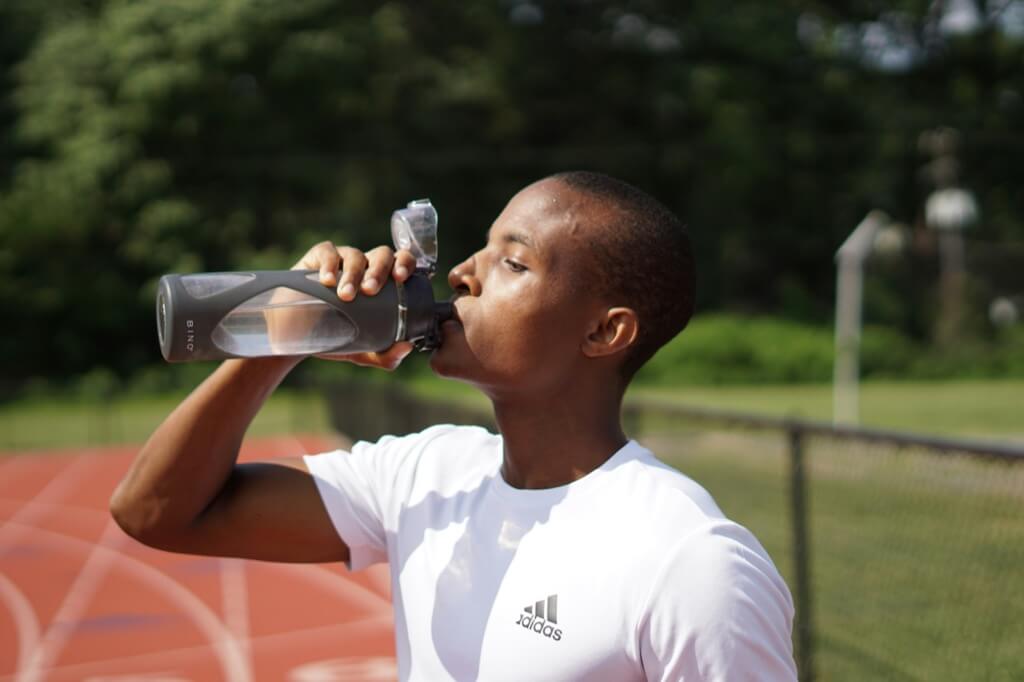Hydration is not just a matter of quenching thirst; it’s a crucial component for maintaining optimal health. Every cell, tissue, and organ in our body needs water to function properly. Water aids in digestion helps regulate body temperature, lubricates joints, and assists in flushing out waste and toxins. But how much water does our body really need?
The ‘8×8′ rule, advocating the consumption of eight 8-ounce glasses of water per day, has been a longstanding guideline. Its simplicity made it an easy-to-remember health mantra. However, this one-size-fits-all recommendation lacks a solid scientific foundation. It’s believed to have originated from a 1945 recommendation by the Food and Nutrition Board, which suggested that a person should consume one milliliter of water for each calorie of food intake. This amount roughly translates to about 2 to 2.5 liters of water a day for a typical adult diet – close to the 8×8 rule. Yet, this guideline didn’t take into account the other sources of water intake or individual differences in water needs.
Individuals’ needs for hydration vary widely and depend on a variety of factors:
- Physiological Factors: Age, body composition, and overall health significantly influence hydration needs. Certain health conditions may require increased fluid intake, while others might necessitate restriction.
- Environmental Factors: Climate and weather conditions play a significant role. In hot and humid weather, the body loses more water through sweat and requires a higher intake to stay hydrated.
- Activity Level: Physical activity and exercise increase water loss through sweat, necessitating more fluid intake to compensate for the loss.
Contrary to popular belief, beverages like tea, coffee, and even soft drinks contribute to our daily water intake. Caffeine’s diuretic effect is relatively mild for people accustomed to caffeine. Moderation is key – while these beverages contribute to hydration, they should not be the sole source of fluids.
Many foods, especially fruits and vegetables, have high water content and contribute significantly to our daily hydration. Foods like cucumbers, lettuce, melons, and oranges are over 90% water.
Misconceptions About Thirst and Dehydration
- While many believe that feeling thirsty is a sign of dehydration, this isn’t always a reliable early indicator. In fact, certain groups of people, such as older adults, may not experience thirst until they are already dehydrated. This is significant because it challenges the common belief that thirst is a timely warning signal for dehydration. Therefore, relying solely on thirst as a cue for drinking water might not always be sufficient, especially in circumstances that increase the risk of dehydration, such as hot weather or illness.
- Thirst is a natural response indicating the body’s need for water, but it does not necessarily coincide with the onset of dehydration. Dehydration begins when the body loses about 2-3% of its water content, but the sensation of thirst can occur before reaching this level. This highlights the body’s proactive mechanism to maintain hydration balance. However, the efficacy of thirst as a hydration indicator can vary among individuals and under different conditions. For example, during strenuous activities or in high temperatures, one might need to drink water before feeling thirsty to prevent dehydration effectively.
- Dehydration manifests through various symptoms beyond just feeling thirsty. These can include headaches, irritability, dizziness, reduced frequency of urination, dark-colored urine, fatigue, confusion, muscle cramps, dry mouth and lips, a lack of sweat, elevated heart rate, and low blood pressure. These symptoms indicate that the body’s need for water has gone beyond the initial signal of thirst and requires immediate attention. In severe cases, especially when mental symptoms like confusion or physiological changes like low blood pressure are observed, medical attention should be sought, as dehydration can become life-threatening.
- Preventing dehydration involves more than just responding to thirst. It’s advisable to drink fluids regularly and eat foods high in water content, such as fruits and vegetables. This is especially important in situations that increase dehydration risk, like during physical exertion, in hot or cold weather, or when experiencing illness. Moreover, understanding that certain beverages and medications can contribute to dehydration is crucial. For instance, diuretic beverages like coffee and alcohol may lead to increased fluid loss and should be balanced with water intake.
The Dangers of Overhydration
Maintaining proper hydration is a delicate balance. While dehydration is a well-known risk, especially in hot climates or during intense physical activity, there’s also a need to be aware of the dangers of overhydration. Overhydration, or hyponatremia, occurs when there is too much water in the body, diluting essential electrolytes like sodium. This imbalance can disrupt cellular functions and lead to serious health complications.
Overhydration is often the result of drinking excessive amounts of water in a short period. This can happen in situations like endurance sports, where participants might consume large quantities of water to prevent dehydration. However, this can lead to a dangerous drop in blood sodium levels, causing symptoms like nausea, headaches, confusion, and in severe cases, seizures or coma. It’s crucial to understand the signs of overhydration and seek medical attention if they occur.
Current guidelines suggest that fluid intake should be based on individual needs, taking into account various factors like body weight, environmental conditions, and lifestyle. The U.S. National Academies of Sciences, Engineering, and Medicine recommends about 15.5 cups (3.7 liters) of fluids a day for men and about 11.5 cups (2.7 liters) for women, including fluids from water, other beverages, and food. This holistic approach considers not just water but also other sources of hydration, emphasizing the importance of a balanced and personalized hydration strategy.
Prevention of both dehydration and overhydration involves mindful consumption of fluids. It’s important to drink water regularly throughout the day, but not to the extent that it exceeds the body’s needs. In situations where there’s a higher risk of dehydration, like during intense physical activity or in hot weather, increasing fluid intake is advisable. Conversely, in situations that might predispose to overhydration, like during endurance sports, it’s important to monitor fluid intake and include sources of electrolytes to maintain a healthy balance.
Monitoring Your Hydration
There are simple ways to monitor hydration:
- Urine Color: Light yellow urine usually indicates proper hydration, while dark-colored urine suggests a need for more fluids.
- Consistent Weight: Sudden weight loss after physical activity can indicate water loss.
- Physical Symptoms: Dry mouth, fatigue, and dizziness can be signs of needing more water.
Hydration Strategies for Specific Needs
Different lifestyles and conditions require tailored hydration strategies. For instance, athletes might need to hydrate more aggressively compared to sedentary individuals. People with certain medical conditions might require specific hydration plans.
The 8×8 rule is a generalized guideline that doesn’t fit everyone. A more personalized approach, considering individual lifestyle, health, and environmental factors, is essential for proper hydration. Listen to your body, be mindful of your environment and activity levels, and choose a hydration strategy that best suits your individual needs.




